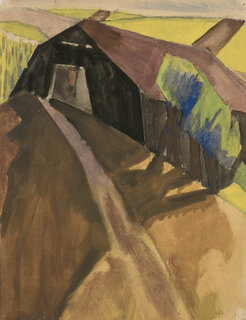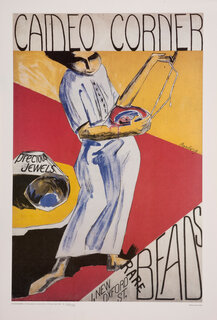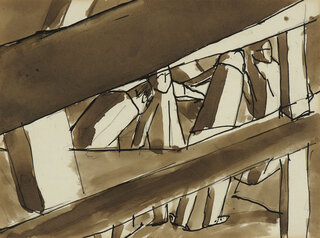
© Margarete Marks estate
Marks’ boldly-coloured, experimental ceramic engages with postwar abstraction. Born into a Jewish family in Cologne, Germany, Marks studied as a ceramicist under Itten at the Bauhaus, going on to establish a highly successful pottery factory with her first husband, Gustav Loebenstein, in 1923, from which her progressive designs were exported to prestigious clients including Heal’s and Liberty in England. After her husband’s death in 1928, she continued running the factory until 1934, when she was forced to sell it, far below its value, to a member of the Nazi party. Marks left for Britain in 1936, helped by her connections to Ambrose Heal’s export manager. Initially, she worked for Minton Pottery where she continued to produce her own radical, avant-garde designs, but was unable to recapture her earlier success with a more conservative British audience. Marks continued her creative career, concentrating on painting, drawing and lithography, but continuing to experiment with ceramics.




